Andrew Jackson State Park
Introduction
Text-to-speech Audio
Images
This billboard marks the entrance of the Andrew Jackson State Park, visitors pay a small fee to enter the park
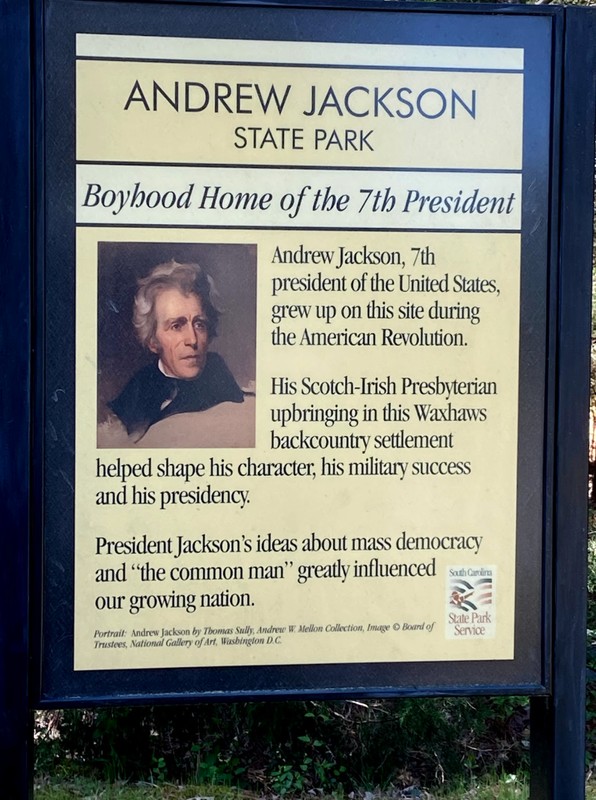
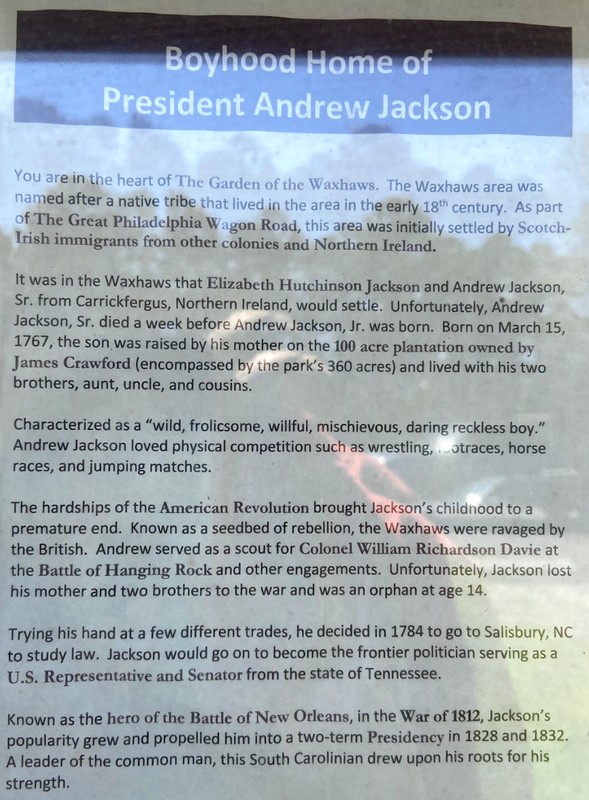
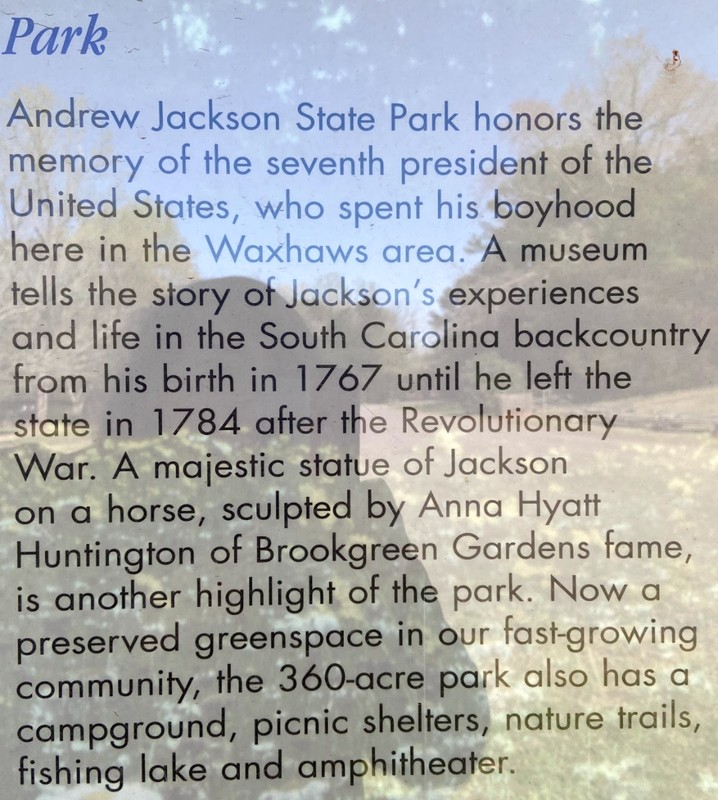
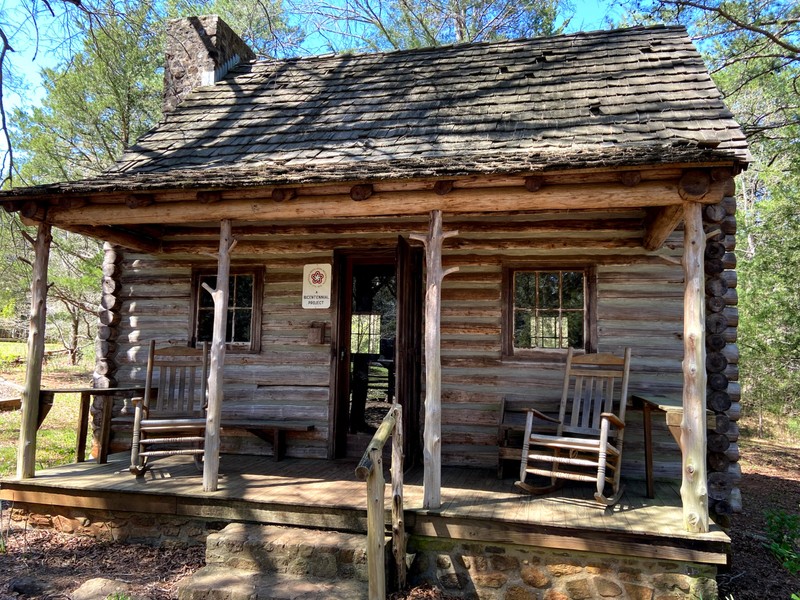
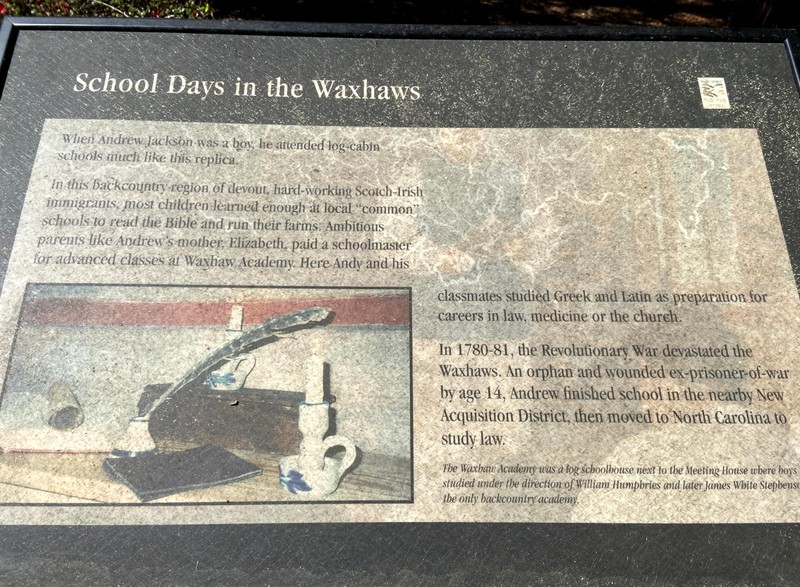
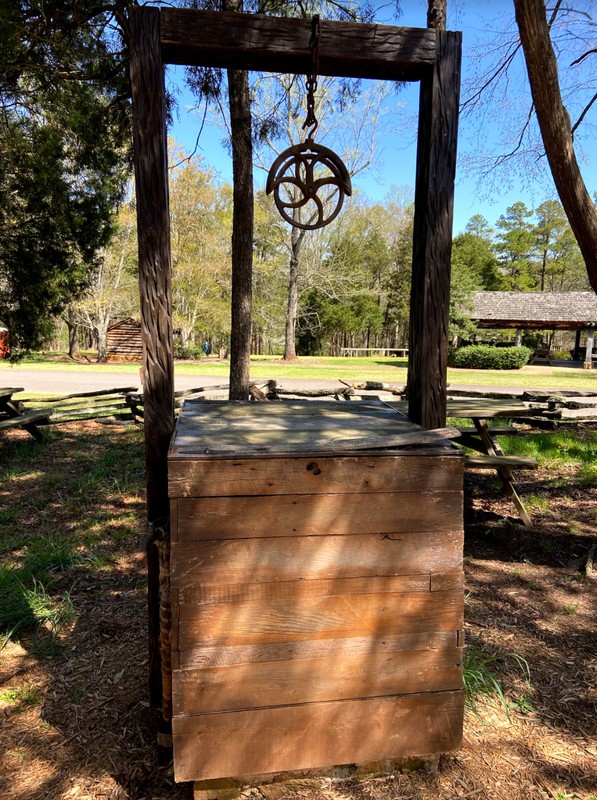
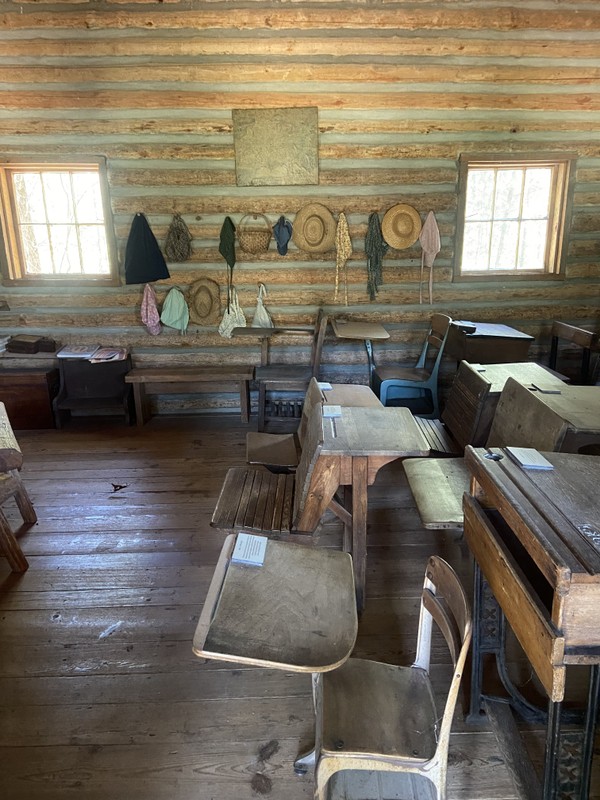
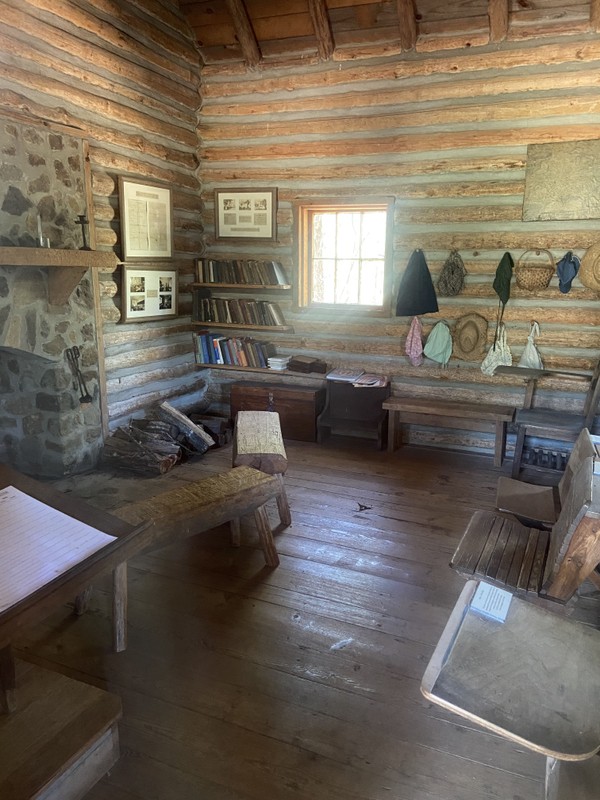
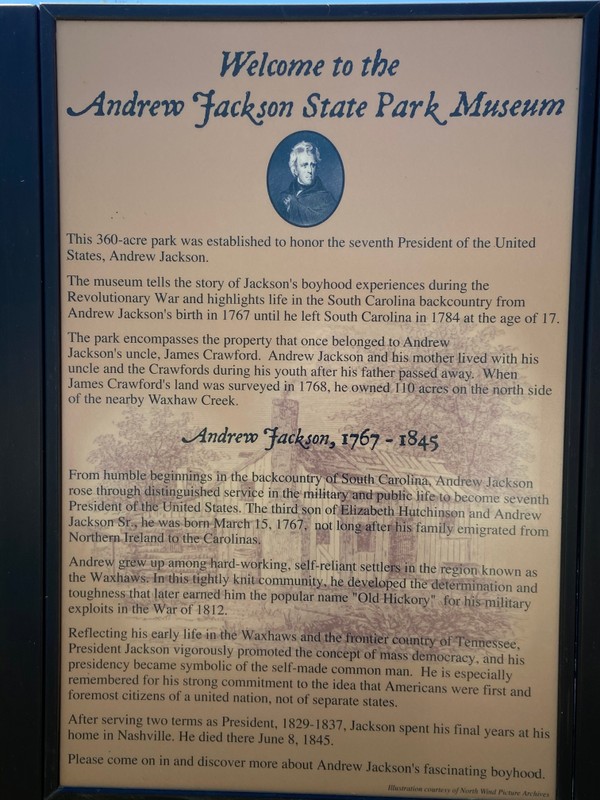
This statue by Anna Hyatt Huntington is titled Andrew Jackson, A Boy of the Waxhaws," and can be found near the entrance of the park.
.jpg)
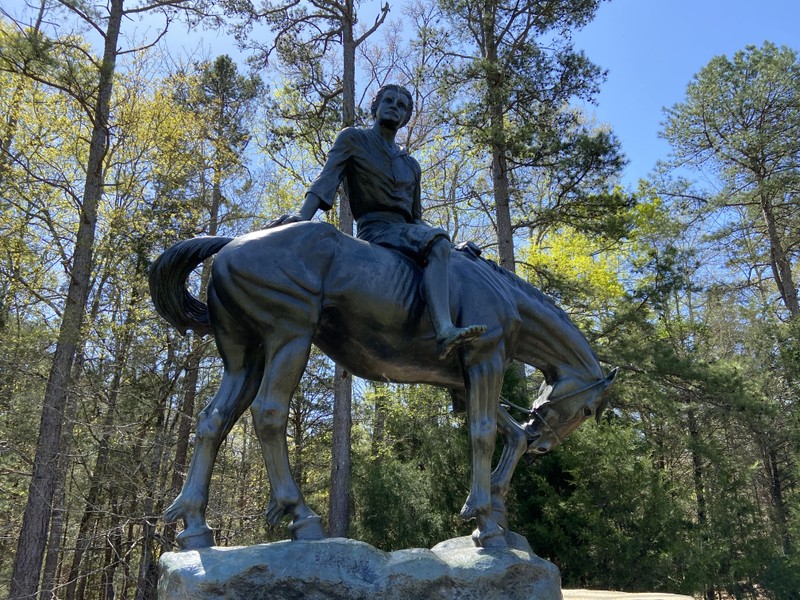
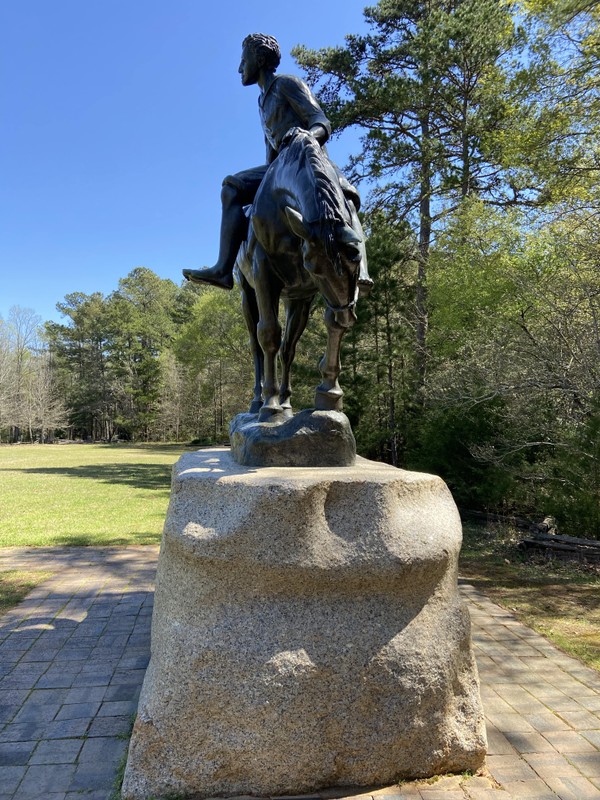
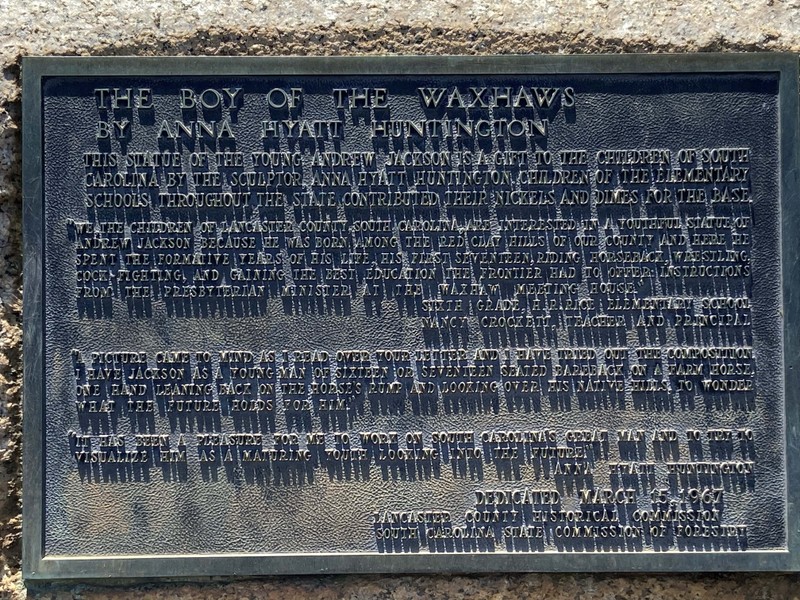
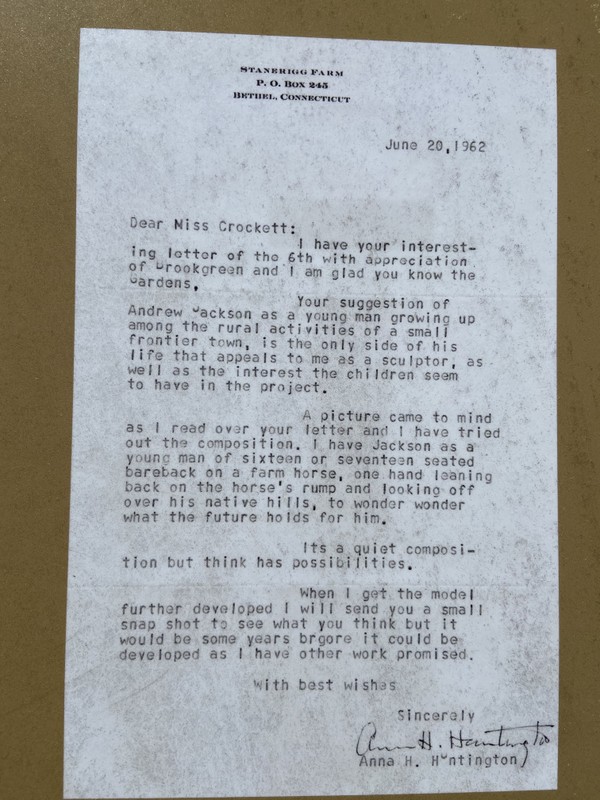
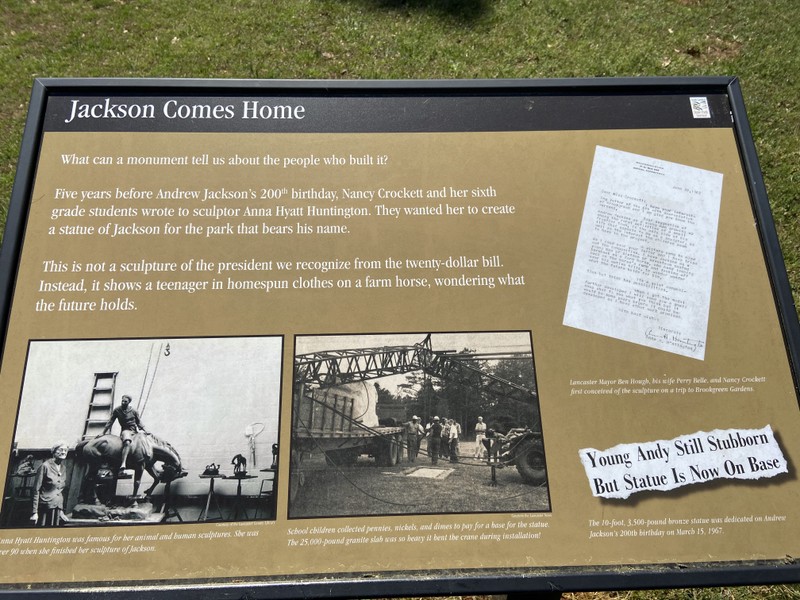
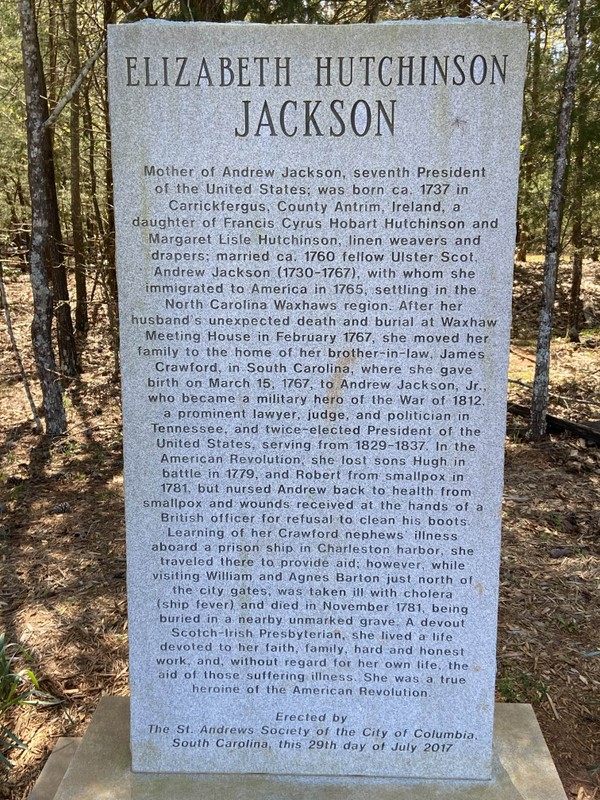
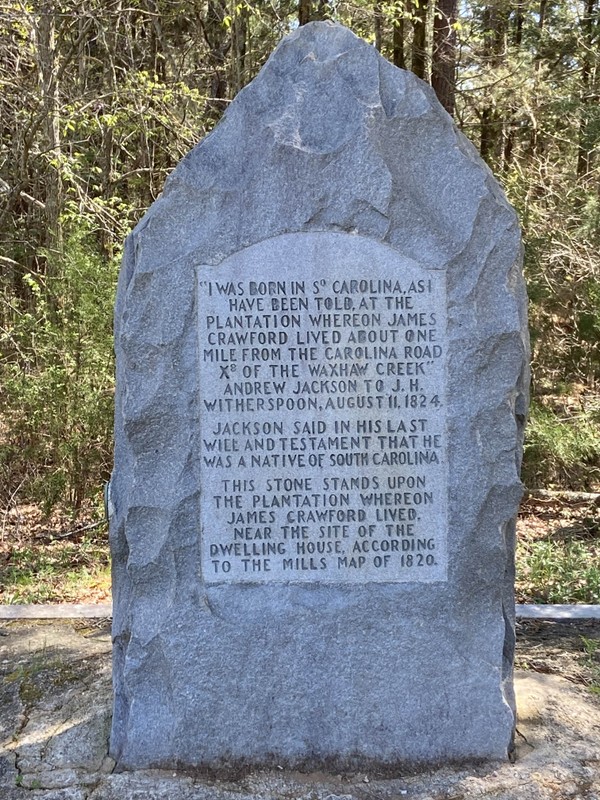
Backstory and Context
Text-to-speech Audio
Andrew Jackson was born March 15th, 1767, in a log cabin situated in the backcountry region of the Carolinas known as the Waxhaws. The name Waxhaws originated from the small Native American tribe residing there in 1700. The Waxhaws was a fertile region with forests and cleared fields. The Waxhaws would be colonized by Scotch-Irish Presbyterian emigrants from Northern Ireland beginning in the 1750s. Approximately 120 families would call the Waxhaw settlement home. The Waxhaw Meeting House church operated as the center of the settlement, while the farms and houses of the settlers were located within a 15-mile radius. The Waxhaw Meeting House is the oldest Meeting House in rural South Carolina and was ordained as an active Presbyterian church in 1755. The Meeting House was used for celebrations and gatherings, where constituents would express their faith and love of God as well as discuss current events and community issues. It was the Meeting House that helped lay a foundation for a strong sense of respect and unity amongst the settlers. To this day, the congregation is still active, worshipping in the fourth sanctuary constructed on the historic site.
One of the settling families included Andrew Jackson Sr., his wife, Elizabeth, and their sons Hugh and Robert. The family of four left Northern Ireland in 1765 for America. They crossed the Atlantic Ocean with other Scotch-Irish settlers, seeking religious freedom so they might practice their Presbyterian beliefs openly, without fear. Once they arrived in America, they took one of two routes to reach the “Garden of the Waxhaws” where their kinfolk had settled years prior. The first route was the Great Wagon Road from Philadelphia, which journeyed south until it reached South Carolina. Another possible, less likely route was that their ship arrived in Charles Town (later called Charleston), and would proceed north inland.
Once the Jacksons arrived in the Waxhaws, it was not long before tragedy struck the family. Andrew Jackson Sr. died in a logging accident in February 1767, only a month before Andrew was born. Due to the chaos brought by his father’s death and the grief of his mother, Elizabeth, there is a controversy about the exact location of Andrew Jackson’s birthplace. The border between North Carolina and South Carolina was undefined and disputed at the time and thus, only the Waxhaws region of his birth is certain. Elizabeth, Hugh, Robert, and Andrew moved in with Elizabeth’s sister, Jane Crawford, who was married to James Crawford. The Crawford family lived on a 100-acre farm, and though it produced bountiful corn, barley, oats, and flax, there were no slaves who worked the land. For the first nine years of Andrew’s life, this was his home. However, Andrew did not remain here long, soon moving with his family to Robert Crawford’s (the brother of their uncle, James Crawford) home. Robert Crawford ran one of the largest farms in the Waxhaws and it was here Andrew would remain for many years, attending school with his cousin, Will Crawford. Andrew grew up among people who worked hard, played hard, worshipped hard, and prayed hard. The people of the Waxhaws loved to dance, hunt, feast, spend time in the forest, distill whiskey, partake in friendly fights, and work together on building projects. First, the settlers constructed the Meeting House, then a general store, and finally a tavern. Education was extremely valued, and the Waxhaw settlement boasted a high literary rate. The settlers had a great deal of personal courage and determination, even as they could be known as aggressive and intolerant of those different than them—notoriously self-isolated for outsiders.
The Revolutionary War soon made its presence known to the Waxhaws in 1780. In May, the British captured Charleston. Mounted British troops under the command of Lt. Col. Banastre Tarleton chased and confronted Col. Abraham Buford’s Continentals that were marching through the Waxhaws on the Camden-Salisbury Wagon Road. The battle was horrendous with 113 Patriots dead and another 150 wounded, as opposed to the British casualties of 5 dead and 14 wounded, ultimately named Buford’s Defeat. The British had no quarter for the defeated patriots. Tarleton refused to spare the lives of the defeated soldiers, sparking grief and outrage throughout the Carolina backcountry, only inciting further loathing for the British forces and disloyalty toward King George. The Jackson family aided the wounded soldiers of Buford’s defeat, nursing those who were carried to the Waxhaws Meeting House. Andre Jackson would see his first battle in the summer of 1780, watching Col. Thomas Sumter attack and route a British outpost near Hanging Rock, a landmark along the Camden-Salisbury Wagon Road. Andrew did not engage in the four-hour battle personally, though he rode with Col. William Davie. It was from Davie that Andrew gathered experience that would later help him in his own military career, to plan boldly and to execute cautiously. Sadly, it was at this battle that Andrew lost his cousin, Lt. James Crawford.
Not long after Col. Sumter’s victory at Hanging Rock, the British defeated him at Fishing Creek in August of 1780. So many men of the Waxhaws were killed in Sumter’s forces that the settlement’s women and children were left virtually defenseless. Andrew and his family were forced to flee for safety. Over the course of six months, his family and the other Waxhaws refugees had to roam North Carolina, only a little ahead of the British army. The experience heightened Andrew’s disdain for the British and protectiveness towards his community and family—already having lost his older brother Hugh a year earlier in the Battle of Stono Ferry. Just when the refugees returned home, Andrew, his brother, Robert, and his uncle, James Crawford, rejoined the militia. On guard duty at Captain Land’s home, right on the Catawba River, loyalists fatally shot Crawford. The British soon after sent a contingent to capture any returned Waxhaws settlers who could join the war. Andrew and Robert went into hiding, to no avail. They were found and thrown into a prison camp located at present-day Camden. Andrew Jackson was only fourteen at this time. Andrew and Robert suffered violent abuse from a British Officer, who struck the boys with his saber. While Andrew defended himself, blocking the saber’s full force with his left hand which would scar his hand and head for life, Robert had no such luck. The saber blow caused a head wound that would be fatal. They were thrown into prison, both contracting smallpox during the time of their three weeks imprisonment. Hope came in the form of Nathaniel Greene who met the British at the Battle of Hobkirk’s Hill.
Now 1781, Elizabeth Jackson arrived at the prison camp to help negotiate the release of her sons during an exchange that would in turn free some British prisoners. Both boys were close to death. The release was successful, however, Robert died from brain inflammation days after arriving home after a forty-mile journey home. Andrew Jackson was the last child Elizabeth had. However, she would return to Charleston to tend the Patriots held hostage on the prison ships in the harbor, perhaps hoping to relieve prisoners of war like her sons were. It would cost Elizabeth her life, swiftly dying of cholera. Andrew Jackson was the sole survivor of his immediate family. There was nothing left to do but to move onward.
For a brief time, Jackson was a teacher in the Waxhaws, young as he was, before relocating to North Carolina to study law, then finally settling in Tennessee in 1788. There he began his political career, first as a public prosecutor, then as Tennessee’s first Congressman, and briefly as a U.S. senator. Next, he became Tennessee Superior Court Judge from 1798 to 1804. Andrew Jackson would marry a widow from a previously abusive marriage named Rachel Donelson Robards in January of 1794. Their love story was fervent, passionate, and tender. Andrew was very devoted to Rachel—adopting her three sons and yet never had any biological children of his own. In 1812, Jackson would join the War of 1812, becoming a popular hero to the masses. He led the Tennessee militia, garnering praise for defeating the Creek Indians who resisted the growing settlement of European Americans in the region. Jackson became a General, winning the final Battle of New Orleans despite being greatly outnumbered. The boost of morale after many military losses and the sacking of the Washington, D.C. set him on the path toward the White House. He was called Old Hickory, achieving almost legendary status as a self-reliant and invincible leader.
Jackson’s popularity grew exponentially with his military career. His victory at New Orleans had enabled the United States to have bargaining power during the negotiations with Britain and Spain. At the time, Spain controlled Florida. General Jackson helped quell the Spanish-backed uprising of the Seminole War in 1817. The result was the United States' acquisition of Florida. In 1821 Jackson became governor of Florida for a short time before returning home to Tennessee, then was elected to the U.S. senate in 1823. Subsequently, Jackson became a nominee for President in the 1824 election. Jackson was among four possible candidates and won the popular and electoral votes. The other candidates were John Quincey Adams, Henry Clay, and William H. Crawford. However, due to there being four candidates, he did not receive enough electoral votes for an outright win. Thus, the election fell into the hands of the House of Representatives. The Congressmen decided to award the Presidency to John Quincey Adams, son of former President, John Adams. However, John Quincey Adams did not have the popularity of Andrew Jackson. In the next election, of 1828, Jackson won, seen as the symbol of the “common man.” Victory could not heal Jackson’s broken heart, however. Months before his inauguration to office, his wife, Rachel died December 22nd, 1828. Jackson somehow carried on even as he grieved, leading a popular and influential presidency. The time he presided over the U.S. was known as the Age of Jackson with his political ideology being coined a “Jacksonian democracy.” Jackson believed in westward expansion, rooted in his frontier mindset. His eyes were always on the horizon. He strove to make the ideas of a people’s democracy and a unified nation with a paramount central government a reality. Individual freedom and self-reliance were ideals that Jackson wanted to be synonymous with American life. His own independent character also led him to strengthen the importance of executive powers, such as making greater use of the presidential veto against legislation he opposed. He was overwhelmingly reelected in 1832.
There have been notorious controversies surrounding Andrew Jackson, his relationship with Native Americans, and the Trail of Tears. From military encounters as a teenager and young adult, Jackson came to view Native Americans as pawns of foreign powers that would challenge American sovereignty. There Native Americans were seen as a threat to national security and to communities he had ties with and desired to protect. Having lost almost his entire family to the British and knowing many Native American tribes worked with the British, there is little question his personal history would distort his vision of Native Americans. Many settlers believed they had earned the right to settle land that once belonged to Native Americans, having worked for it, fought for it, and having little chance of success in the lands from which they emigrated from. Jackson declared that moving the Native Americans across the Mississippi would not only benefit the nation, but save the Indians from extermination in the bitter conflicts over rights to occupy the land. Furthermore, he felt it would allow them to preserve their traditions, rather than to attempt to assimilate them into a European American society as some believed should happen. Jackson remarked the Indian Removal Act of 1830 was one of the most significant measures of his term. The act led to the events of 1838, where thousands of Cherokee were forcibly removed from their homeland in Georgia and marched to Oklahoma. Roughly 4,000 of the 15,000 Cherokee died as a result of cruel treatment by the escorting American troops, starvation, and exposure to the elements.
Andrew Jackson was not president during the Trail of Tears. Having completed his last term as president in early 1837, Andrew Jackson returned to his home in Nashville. Andrew and Rachel had purchased property there in 1804, which included a group of log buildings. They named it The Hermitage. They had resided there until Jackson was elected President. It was there that Rachel passed away. They had built a Federal-style brick house in 1821 and although it was damaged by fire in 1834, Jackson enlarged and remodeled it into a Greek Revival mansion in 1834. Jackson reaffirmed his faith again, rejoining the Presbyterian church. Jackson stayed at The Hermitage until his death on June 8th, 1845 from congestive heart failure. Andrew and Rachel were buried side by side in The Hermitage’s garden.
This biographical examination of Andrew Jackson, battles of the Revolutionary War and the War of 1812, and the colonization and culture of the People of the Waxhaws relates to NC Essential Standards regarding AH1.H.2.1, (Analyze key political, economic, and social turning points from colonization through Reconstruction in terms of causes and effects: e.g., conflicts, legislation, elections, innovations, leadership, movements, Supreme Court decisions), AH1.H.3.3 (Explain the roles of various racial and ethnic groups in settlement and expansion through Reconstruction and the consequences for those groups (e.g., Germans, Scotch-Irish, Africans, American Indian Indians, Irish, Chinese, etc.), and AH1.H.4.1 Analyze the political issues and conflicts that impacted the United States through Reconstruction and the compromises that resulted (e.g., American Revolution, Constitutional Convention, Bill of Rights, development of political parties, nullification, slavery, states’ rights, Civil War).
Sources
Andrew Jackson State Park. (2021). ANDREW JACKSON STATE PARK: MIDLANDS HISTORY AND INTERPRETATION. South Carolina State Parks. https://southcarolinaparks.com/andrew-jackson/history-and-interpretation#jump.
Andrew Jackson: Orphan, General, President, Legend. The Hermitage. (2014, November 5). https://thehermitage.com/learn/andrew-jackson/.
Andrew Jackson's Hermitage Mansion Story. The Hermitage. (2020, June 9). https://thehermitage.com/learn/mansion-grounds/mansion/mansion-story/.
Case, S. State Library of North Carolina. (2009). ANDREW JACKSON. NCpedia. https://www.ncpedia.org/jackson-andrew.
Feller, D. (2017, June 20). Andrew Jackson: Life in Brief. Miller Center. https://millercenter.org/president/jackson/life-in-brief.
The Love Story of Andrew Jackson and Rachel Donelson. The Hermitage. (2019, February 14). https://thehermitage.com/the-love-story-of-andrew-jackson-and-rachel-donelson/.
University of Groningen. (2012). Andrew Jackson 1767-1845 A brief biography. American History: From Revolution to Reconstruction and Beyond. http://www.let.rug.nl/usa/biographies/andrew-jackson/a-life-of-andrew-jackson.php.
University of Tennessee. (2021). The Andrew Jackson Papers. The Papers of Andrew Jackson. https://thepapersofandrewjackson.utk.edu/.
